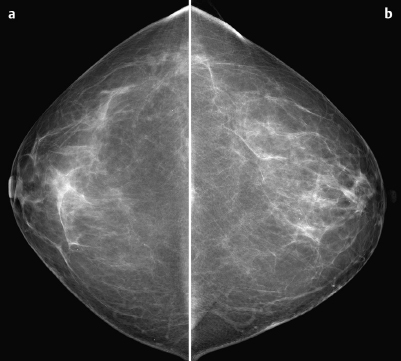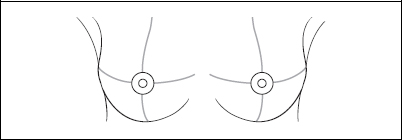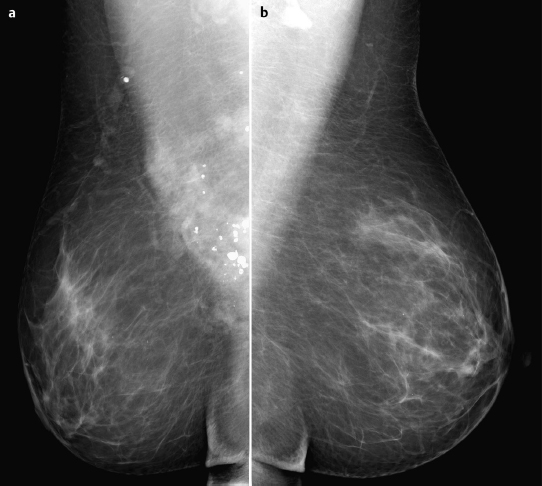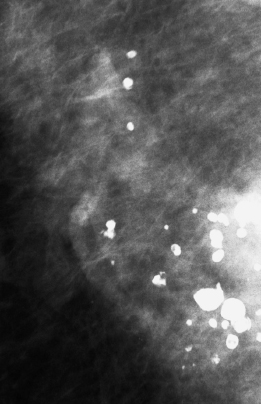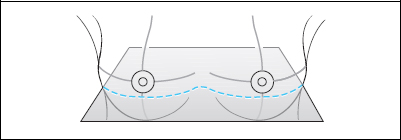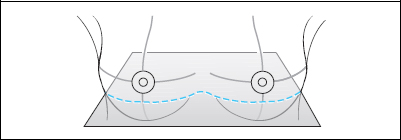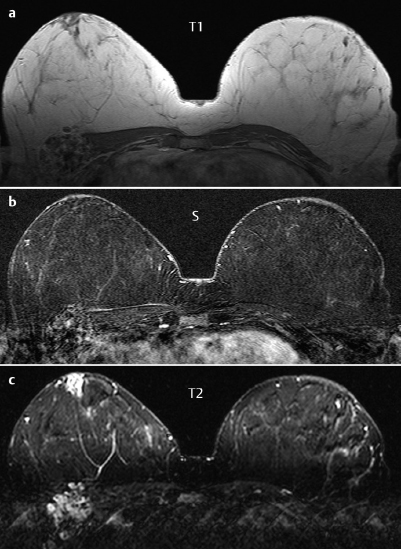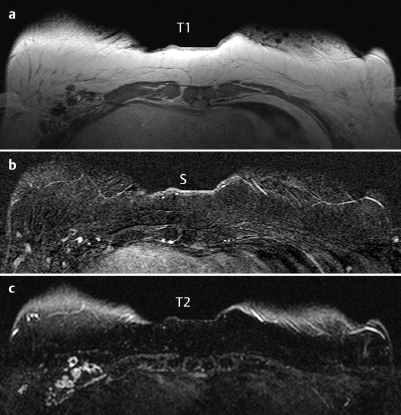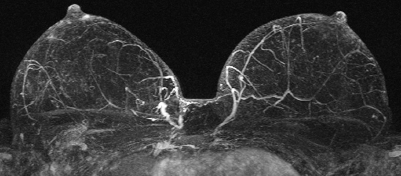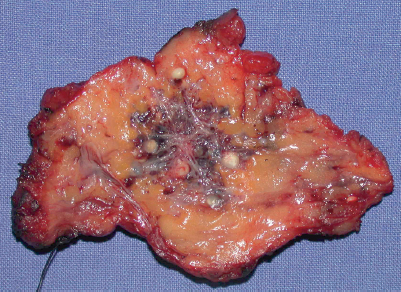No evaluable enhancement |
|
MRI score (points) | 0 |
MRI BI-RADS | 1 |
 Preliminary Diagnosis
Preliminary Diagnosis
Hematoma with calcifications.
Differential Diagnosis
Hamartoma, fat necrosis (previous trauma?), hemangioma, angiosarcoma.
Clinical Findings | right 1 | left 1 |
Ultrasound | right 1 | left 1 |
Mammography | right 3 | left 1 |
MR Mammography | right 1 | left 1 |
BI-RADS Total | right 3 | left 1 |
Limit of the Requested Stereotactic Vacuum Core Biopsy
In this specific case the stereotactic table (manufacturer: Fischer Imaging) required the use of a diagonal needle angle, in the direction of the chest wall, to access findings close to the chest wall. Therefore, the requested stereotactic biopsy was not performed because of the risk of thoracic injury. At the patient’s request, and despite the BI-RADS 3 categorization of the mammography findings (because of the rare differential diagnosis of angiosarcoma), an open biopsy of this lesion was performed after hook-wire localization.
Macroscopic Findings
Circumscribed vascular tumor with focal ectasia and partial thrombosis as well as bullet like calcifications. (Fig. 38.7).
Fig. 38.7 Excised specimen.
Fig. 38.8 Specimen radiography.
Histology
Intramammary hemangioma
Stay updated, free articles. Join our Telegram channel

Full access? Get Clinical Tree


